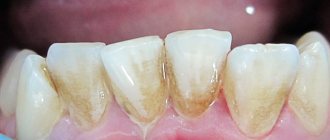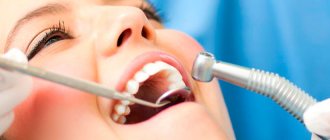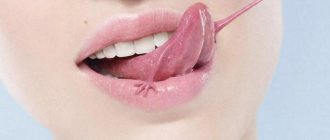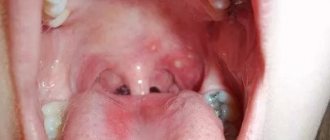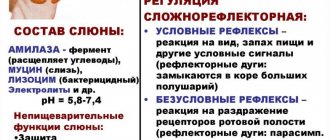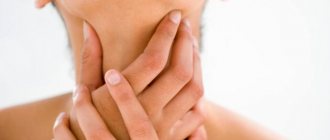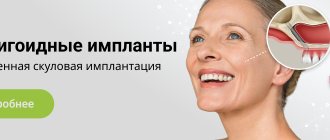To answer the question: why there is a yellow palate in the mouth (see photo), you should study the subject of attention in more detail.
When examining the mouth, in addition to the tongue, gums with teeth and the inner surfaces of the cheeks, a concave dome-shaped surface is also visible, limiting the oral cavity from above.
This palate is a mucous membrane-covered bony structure formed by the palatine processes of the two halves of the upper jaw.
The main purpose of the palate is to be a partition separating the oral cavity from the nasal cavity.
The palate performs the following functions:
- prevents saliva and food from entering the area responsible for breathing and smell recognition;
- ensures unhindered movement of inhaled and exhaled air;
- is responsible for the separate participation of the oral and nasal cavities in the function of sound formation.
In addition to the fixed bone (hard) part of the palate, there is also a soft part. This is a duplication of the mucous membrane (a fold that looks like tissue folded in half), moved up and down by a special muscle: when it contracts, the soft palate rises, and when it relaxes, it lowers.
In a calm state, the soft palate hangs down, allowing free passage of the air stream. But when swallowing, straining and blocking access from behind, from the nasopharynx, it absolutely hermetically separates the two largest cranial cavities from each other, preventing food from entering the nasal space.
Why did the sky turn yellow?
The palate area, like all areas of the skin and mucous membranes on and inside the head, has an abundant blood supply due to a dense network of capillaries.
The palate owes its normal color to the color of the blood flowing through them: in hard ones it is pale pink, in soft ones it is also pink, but of a more saturated dark tone. When inflamed, the color may become flaming crimson or bluish with a purplish tint. If the palate turns red and the throat hurts, this is considered normal, but the palate should not be yellow. For what reason does its color change?
The first thing that comes to mind is smoking. Indeed, the resins contained in tobacco and released when it burns stain the oral mucosa, giving it various shades of yellow and cause the formation of plaque on the palate.
But in addition to direct coloring, smoking:
- causes disorders of blood microcirculation in tissues;
- changes the composition and properties of blood.
Blood cells that contain minimal oxygen become paler, as does the area they supply. At the same time, in the region poorly supplied by them, fatigue and aging of cells increase due to chronic oxygen starvation.
And finally, once the transformations begin, they become irreversible, leading to changes in the biochemistry of tissues and the loss of their original color.
Therefore, the palate in a smoker’s mouth becomes covered with yellow spots with red dots and veins - a picture of capillary paresis.
What color is the palate of a healthy person and what does it look like?
The human palate is located in the upper part of the oral cavity, which consists of two lobes: soft and hard. The hard palate is located closer to the dentition, and the soft palate is in the tonsil area.
Their structure is formed from sensitive tissues covered with a mucous membrane, which explains their tendency to immediately respond to various stimuli.
The mucous membrane of a healthy palate looks like this: it has an even color of a soft pink tone, no veins are visible on the surface. If any changes are detected, you should consult a specialist for advice.
After examining the oral mucosa and studying the characteristic signs, the doctor will give recommendations for additional examination. Based on the test results, an accurate diagnosis is made and an individual treatment regimen is developed.
You should not ignore the appointments, because a change in the color of the palate indicates that irreversible processes have begun in the biochemistry of tissues.
Inflammatory and infectious pathologies of the throat, gums, dental diseases, mechanical damage to the mucous membrane - all these are reasons that can provoke inflammation of the palate (palatinitis). As a result, pain occurs, the timbre of the voice is disrupted, and the pitch of the sound changes. The goal of treatment is to eliminate provoking factors and prevent serious complications with the help of medications and traditional recipes.
Inflammation on the palate
What diseases can there be?
In addition to smoking, the following diseases can cause a yellow palate in the mouth:
- liver;
- kidney;
- gastrointestinal organs.
Or lipid metabolism disorders lead to the same result.
Liver diseases
Disorders of intrahepatic metabolism lead to profound disorders in the biochemistry of all organs and systems of the body and disorders of all types of metabolism:
- protein;
- fat (lipid);
- carbohydrate;
- microelement;
- pigmented.
There is a disruption in the formation of vitamins and hormones, blood parameters change (viscosity, etc.), which leads to tissue hypoxia, which is fraught with biochemical changes on a local scale. In relation to the upper soft and hard palate, this can be either pallor and loosening of the mucous membrane, or a change in its color to yellow.
In case of liver diseases, the appearance of the palate will be particularly diverse, namely:
- yellowish corners of the anterior part of the soft palate with lines in the middle are characteristic of chronic cholecystitis and gallstones;
- Liver cirrhosis is characterized by the appearance of yellow spots in areas of dying tissue;
- viral hepatitis in the icteric phase also leads to staining of the palate.
Kidney diseases
Kidney diseases threaten the body not only with edema and dangerous blood thinning due to impaired water excretion, but also with the accumulation of many toxic substances in the blood: uric acid, creatinine, heavy metal salts and others, which also affect the biochemistry and color of tissues.
Diseases of the gastrointestinal tract
A change in the properties of the digestive juice, bile, which has a pronounced yellow color, during inflammation, which occurs in parallel in the liver and pancreas, leads to the deposition of bile salts in the tissues of the skin and mucous membranes. The skin responds to this process not only with itching, but also with a change in color. The same is observed in the mucous membranes lining various cavities.
With pathology characteristic of the liver-pancreas system, a bronze-icteric color appears exclusively on the soft palate.
The palate may turn yellow due to chronic inflammation in the small and large intestines with frequent constipation.
Blood diseases rarely have an independent character; most often they are a reaction to metabolic disorders in the liver or other organ systems. But its properties determine not only the level of tissue chemistry, but also their color.
It is for this reason that the skin of patients not only due to liver diseases (malaria, hepatitis), but also due to anemia-anemia, looks icteric, as well as the mucous membranes. In addition, the phenomenon of hemolysis is inherent in blood, and the transition of the initial “bruises” to yellow is a common thing for hemoglobin.
A yellow color to the body can also be given by “bronze disease” - a pathology of the adrenal glands, also called Addison’s disease.
Types of diseases that can cause pathology
Yellowness of the sky can appear due to the following ailments:
- Jaundice. It increases the concentration of the hormone bilirubin in the blood. Yellow sky is a symptom of infection with hepatitis viruses, cirrhosis of the liver, and obstruction of the biliary tract. The patient experiences nausea, vomiting, belching, and difficulty defecating. Treatment is performed after identifying the virus that caused the pigmentation changes.
- Syphilis. At stage 2, which lasts 2-5 years, symptoms of the disease appear periodically. Yellow spots usually appear in the mouth. There is a feeling of weakness and aching in the muscles. Hair loss also occurs. Unpleasant symptoms can be avoided with timely treatment. Penicillin or antibiotics are often used. We also need procedures to strengthen the immune system.
- Cholelithiasis. This is a gallstone disease that causes a yellow tint to the palate. The reason may be the filling of the gallbladder with stones formed due to the accumulation of cholesterol and salts. In this case, different methods of breaking stones are used. In advanced cases, the gallbladder must be removed through surgery.
- Cholecystitis. With it, a pronounced yellowness appears. Additional symptoms include a bitter taste in the mouth, nausea and pain in the right hypochondrium. Patients are prescribed antibiotics, means to normalize digestion, and detoxification.
Associated symptoms
In addition to staining the palate yellow, the diseases that cause it also have other characteristic accompanying symptoms. So, this is when:
- kidney pathologies - swelling and urinary disorders;
- blood diseases - symptoms of insufficient blood supply to organs (up to the development of trophic disorders or enlarged lymph nodes);
- changes in the liver - digestive disorders and all types of metabolism.
But if, with diseases of the digestive system, metabolism also suffers and body weight changes, then Addison's disease is characterized by crises. Caused by acute adrenal and vascular insufficiency, they are expressed:
- sudden sharp pain in the lower back, legs, abdomen;
- a sharp decrease in the ability to move (adynamia);
- severe (hectic) fever;
- intense diarrhea and vomiting, quickly leading to dehydration and shock;
- sharply developing arterial hypotension (drop in blood pressure);
- loss of consciousness occurring after a previous short acute psychosis with confusion or delirium;
- violation of water-salt metabolism due to low levels of adrenal hormones in the blood, detected by laboratory tests.
Considering the formation (due to hemolysis) of brown plaque on the teeth and tongue, there is a very high probability that the first doctor a patient with “bronze disease” will visit will be a dentist.
Signs and symptoms of inflammation of the palate
Depending on the causes of inflammation in the oral cavity, a person may experience the following unpleasant symptoms:
- A feeling of acute pain that makes it difficult to eat. Soon the pain increases, sometimes even swallowing becomes impossible.
- If the inflammation is caused by the action of a fungus, a white coating and erosion forms on the surface of the palate. The process is accompanied by an unpleasant putrid odor from the mouth.
- When the cause of inflammation is an infectious lesion - sore throat or tonsillitis, the palate becomes red and swollen.
- In case of acute inflammation, an increase in body temperature and fever is possible.
- If the cause is dental disease, the patient will be bothered by toothache.
- With cancer, the patient complains of aching pain in the palate.
Diagnostic methods
You should begin studying the problem with a visit to the dental office, because only a dentist is able to conduct the most complete and competent examination of the oral cavity.
When treating a patient, the dentist will pay attention not only to the palate - he will examine and examine the entire oral cavity, including the spaces between the cheeks, gums, and lips and the area under the tongue.
Because it is in these hidden places that something that does not catch the eye at a quick glance can be discovered, for example, the first signs of thrush-candidiasis.
Considering that pigmentation of the palate is rarely an independent condition, in addition to a dental examination, the help of other medical specialists may be required to diagnose the problem:
- therapist;
- ENT doctor;
- oncologist;
- allergist.
A mandatory part of diagnosis is laboratory studies of the internal environment of the body in the form of biological fluids: blood, urine, bile, and feces.
It may be necessary to perform allergy tests and study the body’s immune system using instrumental (ultrasound, MRI, CT, radiography) and laboratory methods.
Possible complications
In most cases, inflammation of the palate is a consequence of external irritants or internal diseases.
Ignoring this condition can provoke undesirable consequences:
- destruction of bone tissue;
- tooth loss;
- purulent lesions of the gums;
- deformation of the upper part of the oral cavity;
- disturbances in voice timbre and changes in sound quality.
In severe cases, advanced stages can transform into malignant pathologies.
Ignoring palatal inflammation can lead to tooth loss
Treatment methods
The data obtained after completing all the necessary studies provides an answer to the question: what is the patient dealing with?
If a therapeutic pathology is detected (diseases of the gastrointestinal tract, kidneys, etc.), treatment is carried out by a general practitioner or a specialist with a narrower profile:
- gastroenterologist;
- urologist:
- nephrologist.
In the case where there is a systemic disease of the category rheumatism, syphilis, HIV, treatment is necessary in a specialized medical institution.
The presence of oncological pathology may require joint treatment by an oncologist, a surgeon and consultant doctors of various profiles: a neurologist, an ophthalmologist and others.
If there is a local microbial-viral nature of the lesion in the oral cavity, antiseptics and antibiotics recommended by the dentist can be used.
After the process subsides or during it, professional cleaning of the oral cavity is often required, without which one cannot count on the success of treatment. It may be necessary to repair or replace existing orthodontic structures in the mouth.
Personal hygiene should be ensured by the patient himself, who is interested in resolving the problem as quickly as possible.
Preventive measures
As a preventative measure, it is recommended to periodically undergo dental examinations.
This will help identify the disease at an early stage and begin a course of treatment in a timely manner, thereby preventing the development of complications.
It is also necessary to carry out daily oral hygiene procedures to remove food debris and remove plaque from the mucous membrane.
The main defense of any person is, first of all, immunity. To strengthen it, you should maintain physical fitness, radically review your diet, and enrich the body with valuable minerals and vitamins.
The following recommendations are also preventive measures:
- You should not overuse spicy, salty foods, or foods with a hard structure;
- after eating, you need to rinse your mouth with a special balm or at least clean water;
- If you experience unpleasant sensations in your mouth, rinse for several days using decoctions of propolis, chamomile, oak bark or sage.
Quitting bad habits, in particular smoking, can prevent the formation of yellow plaque on the palate.
Treatment with traditional methods
The general principles of treatment with traditional methods do not differ from those in medicine and dentistry:
- the use of antiseptics (teas, infusions) for oral hygiene;
- increasing the level of health with the help of traditional, proven means (honey and bee products and the like).
The use of traditional medicine methods should in no way contradict the requirements of official science; proposals to use unstudied or questionable treatment methods should be categorically rejected.
The use of any form of rinse or other treatment method must be approved by the patient's attending physician.
Treatment at home
Pain and discomfort inside the oral cavity due to inflammation of the palate greatly worsens the patient’s normal life. Pharmacy medications and folk remedies as auxiliary therapy help alleviate the condition and cope with the disease.
Medicines
The main treatment depends on the original disease:
- For fungi and bacterial pathologies, it is recommended to use local preparations for rinsing the mouth and lubricating the mucous membrane - Chlorhexidine solution and gel, Rotokan, Stomatofit.
- For severe pain of various etiologies, local anesthetics are prescribed - Kalgel, Cholisal-gel.
- For purulent lesions, antibiotics are needed for oral use - Flemoxin, Sumamed.
Sumamed is an antibiotic agent
Folk remedies
If wounds in the mouth do not heal for a long time, traditional medicine will help relieve inflammation in the oral cavity and relieve pain. Effective recipes help well in complex drug therapy.
Sage decoction
Brew 1 tsp in 250 ml of boiling water. herbs, simmer over low heat for 3 minutes, cool. Rinse your mouth with the strained solution 4–6 times a day. The course of treatment is until the unpleasant symptoms are completely eliminated.
Gargling with sage decoction will help relieve inflammation.
Oak bark decoction
Grind the raw materials and pour 2 tbsp into an enamel pan. l., pour 500 ml of boiling water. Boil in a water bath for 5-7 minutes, leave to infuse. Strain and rinse your mouth with warm broth every 2 hours.
Rinse your mouth with oak bark decoction every two hours
Raspberry leaf infusion
Finely chop raspberry leaves (2 tbsp) and pour a glass of boiling water. Rinse your mouth with the cooled liquid at least 5 times a day. For each manipulation it is necessary to prepare a glass of fresh infusion.
An infusion of raspberry leaves effectively relieves inflammation
St. John's wort tincture
Dry grass (150 g) pour 0.5 liters of vodka, leave for a week in a dark place. Take the medicine 35 drops with water. The product is also suitable for external use. Dilute 20 drops of solution in 50 ml of water and moisten a cotton pad and wipe the ulcerations on the palate.
St. John's wort tincture can be used for internal and external use
Viburnum berry decoction
Place dried berries (100 g) in boiling water (1 l) and boil for 15 minutes. Rinse your mouth with the cooled broth 3-4 times a day.
A decoction of viburnum berries is a good remedy for treating inflammation of the palate.
Chamomile and calendula infusion
Combine chamomile and calendula inflorescences in equal parts (1 tsp each). Pour two cups of boiling water over the vegetable mixture and leave to steep for 50 minutes. Thoroughly rinse your mouth and throat with herbal tea in the morning and evening.
Rinse your mouth with chamomile and calendula infusion morning and evening.
Propolis tincture
Dilute the pharmaceutical product in water at the rate of 10 drops per 200 ml of warm water. Rinse your mouth with the solution for 5–7 minutes every 2–3 hours.
To relieve inflammation on the palate, use propolis tincture
Prevention measures
Preventive measures include the following:
- careful and attentive care of teeth and oral cavity in general;
- visiting the dentist in a timely manner and following his recommendations, and if problems arise, providing professional assistance;
- preventing possible diseases by fully increasing the body’s defenses (maintaining a consciously healthy lifestyle), and in the event of an acute pathology, its timely treatment.
As a conclusion from what has been said: a person needs to be constantly engaged in maintaining health, but if problems arise, be sure to consult a specialist doctor.
Functions of the sky
The palate is a mucous membrane-covered bony structure formed by specific processes of the two halves of the upper jaw. Its main purpose is considered to be to separate the mouth from the nose. The sky performs the following functions:
- the penetration of saliva and food into the area responsible for breathing and recognizing aromas is prevented;
- serves for continuous movement of inhaled and exhaled air;
- necessary for the separate participation of the mouth and nose in the formation of sound.
In addition to the fixed bony part of the palate, there is also a soft part. It is a duplicate of the mucous membrane, which moves up and down with a special muscle: with its contraction, the soft palate rises, and when relaxed, it falls.
During a calm state, the soft palate hangs down, allowing the air stream to pass easily. But during swallowing, with tension and blocking access from behind, from the side of the nasopharynx, it hermetically separates two large cranial strips from each other, protecting the nasal cavity from the penetration of food.
